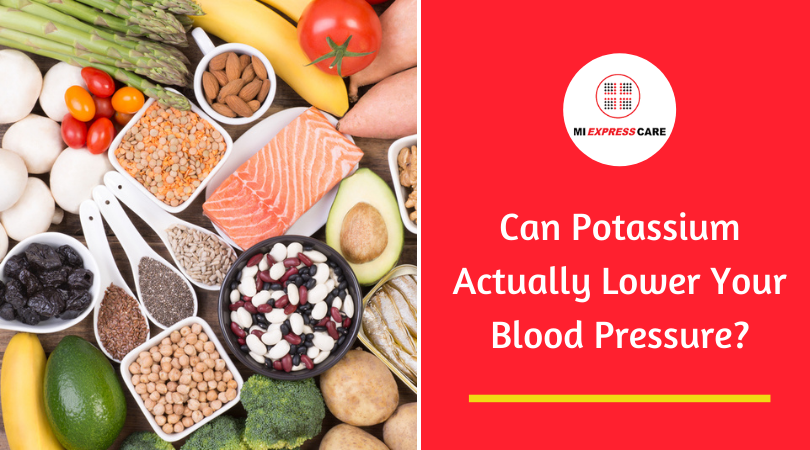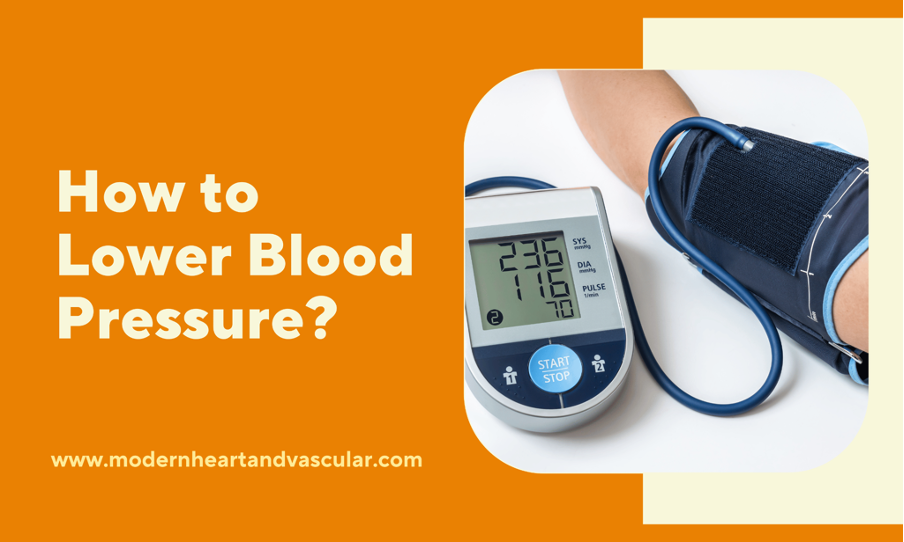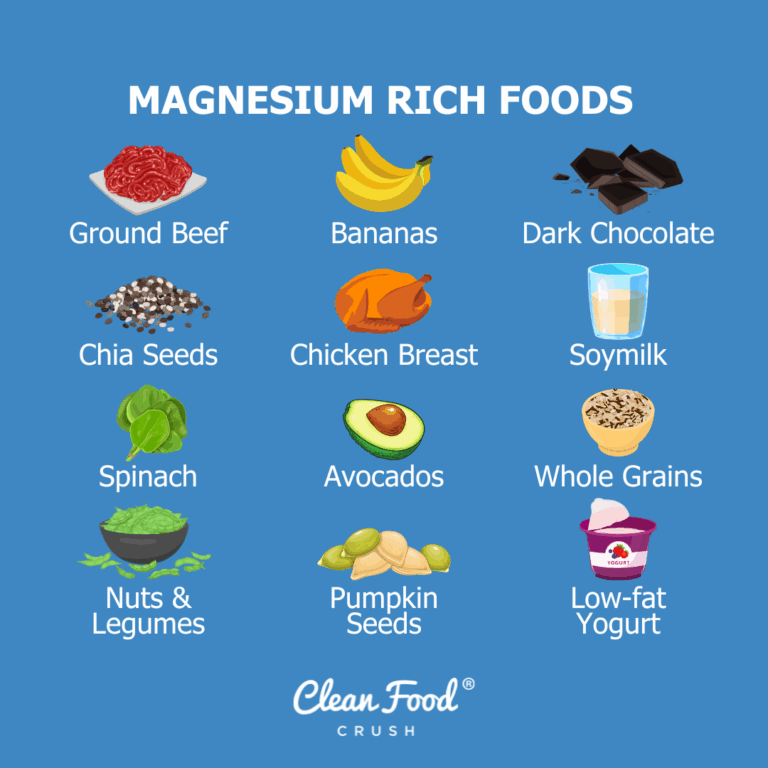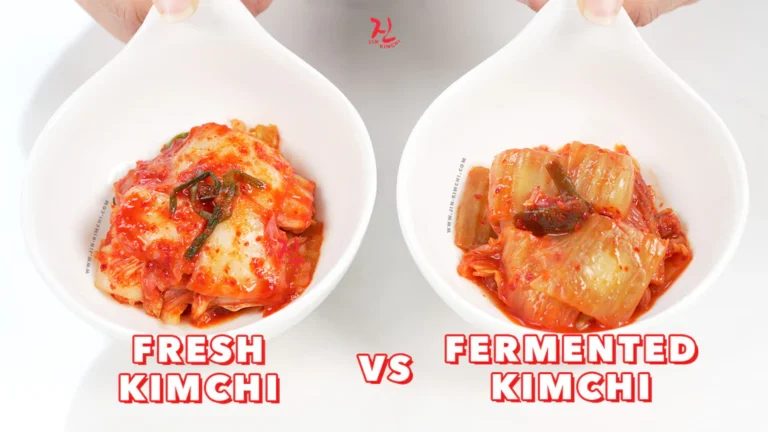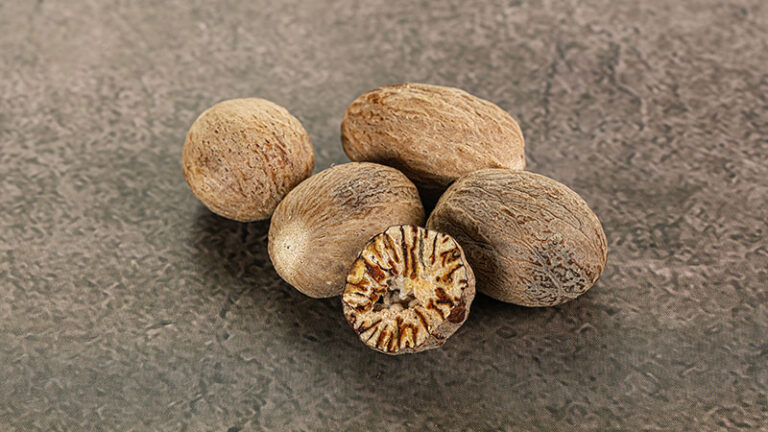Can Garlic Really Lower Your Blood Pressure? The Humble Clove’s Enduring Journey from Ancient Elixir to Modern Medicine
From the dawn of civilization, across empires and epochs, a humble, pungent bulb has held a revered place in the annals of human health. It is the unassuming garlic clove, Allium sativum, a plant whose history is as rich and layered as its distinctive flavor. For millennia, it has been lauded not merely as a culinary staple, but as a potent medicine, whispered about in ancient texts, prescribed by traditional healers, and celebrated in folklore. Yet, in our era of evidence-based medicine, the question persists, sharp and insistent as garlic’s own bite: Can this ancient remedy truly stand up to the rigorous scrutiny of modern science, particularly in the battle against a silent, ubiquitous killer – high blood pressure?
This is not just a scientific inquiry; it is a story. It’s the tale of humanity’s persistent quest for health, the journey from intuitive wisdom to empirical understanding, and the fascinating dance between nature’s pharmacy and the sophisticated tools of contemporary research. Join us as we peel back the layers of this extraordinary plant, exploring its storied past, dissecting its complex chemistry, and weighing the scientific evidence that seeks to answer whether garlic truly holds a key to lowering blood pressure.
Part 1: The Echoes of Antiquity – Garlic’s Storied Past
Our story begins in the mists of time, long before the invention of the stethoscope or the sphygmomanometer. Archaeological evidence suggests garlic cultivation dates back over 5,000 years, likely originating in Central Asia. From there, its reputation, both culinary and medicinal, spread like wildfire across the ancient world.
The ancient Egyptians revered garlic, not just for its flavor but for its purported strength-giving properties. Hieroglyphs depict garlic as an offering to the gods, and papyri – notably the Ebers Papyrus (circa 1550 BCE) – list garlic among remedies for a vast array of ailments, from headaches to parasitic infections. It was famously fed to the pyramid builders, believed to enhance their stamina and protect them from illness, a testament to an early, albeit unscientific, understanding of its fortifying effects.
Across the Mediterranean, the Greeks also embraced garlic. Hippocrates, the "Father of Medicine," prescribed it for everything from respiratory problems to leprosy and digestive disorders. The Olympic athletes consumed it for strength, while soldiers ate it for courage before battle. Similarly, the Romans utilized garlic for its purported therapeutic benefits, particularly for digestive and circulatory complaints, and as a general tonic.
Further East, in ancient China and India, garlic’s medicinal properties were deeply integrated into traditional healing systems like Ayurveda and Traditional Chinese Medicine (TCM). It was used for respiratory infections, digestive issues, and cardiovascular conditions, reflecting a consistent thread of perceived benefits across disparate cultures. In these systems, garlic was often seen as a warming herb, capable of improving circulation and dispelling cold, concepts that, in a rudimentary way, touch upon its modern-day observed effects.
The Middle Ages saw garlic’s continued prominence in Europe, not just as a culinary staple, but as a powerful protective agent. It was believed to ward off evil spirits, vampires, and even the plague, highlighting its perceived potency against unseen threats. Herbalists and folk healers routinely prescribed it for infections, fevers, and various chronic conditions.
This long, uninterrupted history of medicinal use is more than mere anecdotal curiosity; it forms the bedrock upon which modern scientific inquiry is built. While ancient observations lacked the precision of controlled trials, the sheer persistence of garlic’s reputation across diverse cultures and millennia suggests there might be more to its story than myth alone. It signals a collective human experience, a recurring perception of benefit that begged for a deeper, more scientific explanation. And so, the humble clove, steeped in legend, entered the laboratories of the modern age.
Part 2: Understanding Hypertension – The Silent Scourge
Before we delve deeper into garlic’s potential, it is crucial to understand the adversary it is purportedly fighting: hypertension, or high blood pressure. Often dubbed the "silent killer," hypertension is a global health crisis, affecting billions worldwide. It typically presents without obvious symptoms, yet its insidious progression wreaks havoc on the cardiovascular system, leading to a cascade of life-threatening conditions.
What exactly is blood pressure? It is the force exerted by circulating blood against the walls of the body’s arteries, the major blood vessels. It is measured in millimeters of mercury (mmHg) and expressed as two numbers:
- Systolic pressure: The higher number, representing the pressure when your heart beats and pumps blood.
- Diastolic pressure: The lower number, representing the pressure when your heart is at rest between beats.
A healthy blood pressure is generally considered to be below 120/80 mmHg. Hypertension is diagnosed when blood pressure consistently reads 130/80 mmHg or higher.
Why is high blood pressure so dangerous? The sustained force of elevated blood pressure damages the delicate inner lining of the arteries (the endothelium). This damage makes the arteries less elastic and more prone to the accumulation of plaque (atherosclerosis). Over time, this process narrows the arteries, further increasing blood pressure and restricting blood flow to vital organs. The consequences are dire:
- Heart Attack and Stroke: Blocked or burst arteries in the heart or brain.
- Heart Failure: The heart becomes enlarged and weakened from overwork.
- Kidney Disease: Damaged blood vessels impair the kidneys’ ability to filter waste.
- Vision Loss: Damage to the delicate blood vessels in the eyes.
- Peripheral Artery Disease: Reduced blood flow to the limbs.
The global prevalence of hypertension is staggering, contributing significantly to cardiovascular disease, which remains the leading cause of death worldwide. Current management strategies typically involve a combination of lifestyle modifications (diet, exercise, stress reduction) and, for many, pharmacological interventions such as ACE inhibitors, beta-blockers, diuretics, and calcium channel blockers. While highly effective, these medications can come with side effects, leading many individuals to seek complementary or alternative therapies, particularly those rooted in natural sources and historical precedent. This widespread desire for natural solutions amplifies the urgency and relevance of investigating whether ancient remedies like garlic can truly play a meaningful role in modern health management.
Part 3: The Chemical Symphony Within – Decoding Garlic’s Potency
The journey from ancient wisdom to scientific validation requires a deep dive into the very essence of garlic: its chemistry. What exactly is it about this bulb that has captivated healers for millennia? The answer lies in a complex interplay of compounds, primarily sulfur-containing molecules, which are responsible for its characteristic aroma, flavor, and, most importantly, its biological activity.
The star of this chemical symphony is undoubtedly allicin. However, allicin itself isn’t present in intact, raw garlic. It’s a fascinating tale of enzymatic transformation. When a garlic clove is crushed, chopped, or chewed, two key players come together:
- Alliin: A sulfur-containing amino acid, stable and odorless, present in the garlic cells.
- Alliinase: An enzyme, also present in the garlic cells, but compartmentalized separately.
When the cell structure is disrupted, alliinase acts upon alliin, rapidly converting it into allicin. This reaction is crucial because allicin is highly unstable and quickly breaks down into a variety of other bioactive sulfur compounds. This rapid transformation means that the form of garlic consumed (raw, cooked, aged) significantly impacts the specific compounds present and, consequently, its potential health effects.
The breakdown products of allicin are themselves potent. These include:
- Ajoene: A fat-soluble compound formed when allicin degrades. It’s known for its anti-thrombotic (anti-clotting) properties.
- Diallyl disulfide (DADS) and Diallyl trisulfide (DATS): These are also products of allicin degradation and contribute to garlic’s unique aroma and biological effects, including anti-inflammatory and antioxidant activities.
- S-allylcysteine (SAC) and S-allylmercaptocysteine (SAMC): These water-soluble compounds are particularly abundant in aged black garlic extract. Unlike allicin, they are stable and bioavailable, making them key candidates for therapeutic action, especially in supplements where stability is paramount.
Beyond these well-known sulfur compounds, garlic also contains a supporting cast of other beneficial constituents:
- Flavonoids: Antioxidant compounds common in plants.
- Selenium: An essential trace mineral with antioxidant properties.
- Vitamins: Including Vitamin C and some B vitamins.
- Trace Minerals: Manganese, copper, iron.
The complexity of garlic’s chemistry poses a significant challenge for researchers. Different processing methods (crushing, cooking, drying, aging) lead to different profiles of active compounds. For instance, cooking garlic can deactivate alliinase, preventing allicin formation, while aging garlic (as in aged black garlic) converts unstable allicin into more stable and water-soluble compounds like SAC, which may have distinct benefits and improved bioavailability. This variability underscores why some studies yield different results, as the "garlic" being tested might not be chemically identical across investigations. The true power of garlic may not lie in a single "magic bullet" compound, but rather in the synergistic action of its entire chemical orchestra, a symphony that changes depending on how the clove is prepared and consumed.
Part 4: The Proposed Mechanisms of Action – How Might Garlic Lower Blood Pressure?
With its complex chemical makeup now partially unveiled, the next critical chapter in our story delves into the "how." How exactly might these myriad compounds, particularly the sulfur-containing ones, exert a beneficial effect on blood pressure? The scientific community has proposed several intricate mechanisms, each shedding light on garlic’s potential role in cardiovascular health.
One of the most compelling and well-researched pathways involves the nitric oxide (NO) pathway. Nitric oxide is a crucial signaling molecule in the body, playing a pivotal role in regulating blood vessel tone. It acts as a vasodilator, meaning it helps relax and widen blood vessels, thereby reducing the pressure of blood flowing through them. Garlic compounds, particularly those derived from allicin and its breakdown products, are believed to stimulate the production of NO in the endothelial cells lining the arteries. They can also enhance the bioavailability of NO and protect it from degradation, leading to improved vasodilation and, consequently, lower blood pressure. The specific mechanism often involves the interaction of polysulfides (like DADS and DATS) with red blood cells, releasing hydrogen sulfide (H2S), another gasotransmitter that can promote vasodilation and protect the cardiovascular system.
Another significant mechanism that aligns garlic with conventional hypertension treatments is its potential for Angiotensin-Converting Enzyme (ACE) inhibition. ACE is an enzyme that plays a central role in the body’s renin-angiotensin-aldosterone system (RAAS), a powerful regulator of blood pressure. ACE converts angiotensin I to angiotensin II, a potent vasoconstrictor (a substance that narrows blood vessels) and a stimulator of aldosterone release, which promotes sodium and water retention. Many widely prescribed blood pressure medications are ACE inhibitors, working by blocking this enzyme. Research suggests that certain garlic compounds, particularly S-allylcysteine (SAC) and some thiosulfinates, may possess ACE-inhibitory properties, thereby mimicking the action of these pharmaceutical drugs and contributing to blood pressure reduction.
Beyond direct vascular effects, garlic also exhibits powerful antioxidant properties. Oxidative stress, caused by an imbalance between free radicals and the body’s ability to neutralize them, is a major contributor to endothelial dysfunction and the progression of atherosclerosis. Garlic’s sulfur compounds and flavonoids are potent free radical scavengers, helping to protect blood vessel walls from oxidative damage. By reducing oxidative stress, garlic can help maintain the elasticity and healthy function of arteries, which is crucial for optimal blood pressure regulation.
Furthermore, chronic inflammation plays a key role in the development and progression of cardiovascular diseases, including hypertension. Garlic compounds have demonstrated significant anti-inflammatory effects by modulating various inflammatory pathways and reducing the production of pro-inflammatory cytokines. By calming inflammation within the arterial walls, garlic may contribute to improved endothelial function and a healthier vascular environment, indirectly supporting blood pressure control.
While less directly related to acute blood pressure reduction, garlic’s well-documented effects on cholesterol levels and platelet aggregation also contribute to overall cardiovascular health. Garlic has been shown to modestly reduce total and LDL ("bad") cholesterol and inhibit platelet aggregation, thereby reducing the risk of blood clot formation. These actions, by mitigating the risk factors for atherosclerosis and thrombotic events, contribute to a healthier cardiovascular system, which in turn can support better blood pressure management in the long term.
Finally, garlic contains a small amount of potassium, an electrolyte known to counteract the effects of sodium and promote healthy blood pressure. While not a primary mechanism, it’s a contributing factor to its overall salutary profile.
It’s highly probable that garlic’s blood pressure-lowering effects are not attributable to a single compound or pathway but rather to a synergistic interaction of its diverse bioactive constituents. This "whole food" effect, where multiple compounds work in concert, often proves more effective and nuanced than the action of isolated chemicals. The challenge for science is to unravel this intricate dance of molecules and understand how this ancient bulb orchestrates such a complex and beneficial physiological response.
Part 5: The Scientific Scrutiny – Clinical Trials and Meta-Analyses
The historical reverence and plausible mechanisms are compelling, but in the realm of modern medicine, the ultimate test for any therapeutic claim lies in rigorous scientific investigation. For decades, researchers have been putting garlic to the test in clinical trials, attempting to quantify its effects on blood pressure and separate fact from folklore. The journey has been complex, marked by varying methodologies, inconsistent results, and a gradual refinement of understanding.
Early studies on garlic and blood pressure were often small, short-term, and sometimes lacked the stringent controls necessary for definitive conclusions. Methodological flaws, such as the use of non-standardized garlic preparations, varying dosages, and heterogeneous patient populations, led to conflicting results, sowing seeds of doubt and frustration within the scientific community. Some studies reported significant reductions, while others found no effect at all. This inconsistency highlighted the critical need for more robust research.
As scientific methodologies advanced, the quality of research improved. Researchers began to conduct larger, double-blind, placebo-controlled randomized clinical trials (RCTs) – the gold standard in medical research. These trials aimed to minimize bias and provide clearer answers. What emerged from these more rigorous studies was a pattern: while garlic was not a magic bullet capable of replacing potent pharmaceutical drugs, it did show a consistent, albeit modest, blood pressure-lowering effect, particularly in individuals with pre-existing hypertension.
To draw more definitive conclusions from the myriad of individual studies, scientists turned to meta-analyses and systematic reviews. These powerful statistical tools combine data from multiple independent studies, allowing for a broader perspective and increased statistical power. Several influential meta-analyses have now addressed the question of garlic and blood pressure, offering a clearer consensus:
- Overall Consensus: The general consensus from these comprehensive reviews is that garlic, particularly aged garlic extract (AGE), can produce a modest but statistically significant reduction in both systolic and diastolic blood pressure in hypertensive individuals. The effect is generally more pronounced in those with higher baseline blood pressure.
- Quantifying the Effect: The typical reduction observed in meta-analyses ranges from approximately 5 to 10 mmHg for systolic blood pressure and 3 to 7 mmHg for diastolic blood pressure. While these numbers may seem small compared to the effects of prescription medications, even a modest reduction can have significant clinical implications. A sustained drop of just 2 mmHg in systolic blood pressure is associated with a 10% reduction in stroke risk and a 7% reduction in ischemic heart disease mortality over 10 years. For individuals with mild to moderate hypertension, or those seeking to complement their existing management strategies, these reductions are meaningful.
- Form of Garlic Matters: The research consistently points to Aged Garlic Extract (AGE) as the most studied and seemingly effective form. This is likely due to its standardized production, the conversion of unstable allicin into stable, water-soluble compounds like S-allylcysteine (SAC), and its improved bioavailability. Raw garlic, while potent, can be inconsistent in its chemical composition and difficult to consume in therapeutic quantities over time. Garlic powder supplements have also shown some efficacy, though often less consistently than AGE.
- Duration and Dosage: Most effective studies involved daily doses of garlic equivalent to 600-900 mg of aged garlic extract, often containing 1.8 to 2.4 mg of S-allylcysteine, taken over a period of at least 12 weeks, and sometimes up to 6 months or a year. Consistency and long-term adherence appear to be crucial for observing the beneficial effects.
Despite these encouraging findings, it is vital to acknowledge the limitations and gaps in the current research:
- Standardization: The lack of strict standardization across garlic preparations remains a challenge. Different products contain varying amounts and types of active compounds, making direct comparisons difficult.
- Patient Populations: While most studies focus on individuals with mild to moderate hypertension, more research is needed on severe hypertension or specific demographic groups.
- Long-Term Effects and Safety: While short-to-medium term studies generally show good safety profiles, more long-term studies are needed to fully understand sustained effects and potential rare adverse events.
- Interaction with Medications: While generally safe, garlic can interact with certain medications, particularly anticoagulants (blood thinners), due to its anti-platelet effects. This necessitates careful consideration and medical consultation.
- Publication Bias: As with any area of research, there’s a potential for publication bias, where studies showing positive results are more likely to be published than those showing no effect.
In essence, the scientific scrutiny of garlic for blood pressure has moved beyond simple yes-or-no answers. The evidence, aggregated through systematic reviews, suggests that garlic is not a panacea, nor a replacement for prescribed medication in most cases of established hypertension. However, for those looking for a natural, complementary approach, particularly in the form of standardized aged garlic extract, the scientific data supports a modest yet clinically relevant blood pressure-lowering effect, adding a compelling chapter to the story of this ancient plant.
Part 6: Practical Considerations and the Human Element
The scientific journey has provided valuable insights, but for individuals considering garlic as part of their health regimen, practical considerations are paramount. How does one incorporate garlic, and what should one be mindful of? The answers often bridge the gap between scientific evidence and the realities of daily life, touching upon the human element of seeking natural health solutions.
Dosage and Forms:
Based on the research, the most consistently effective form of garlic for blood pressure seems to be Aged Garlic Extract (AGE). Doses typically range from 600 mg to 900 mg per day, often split into two or three doses, containing standardized amounts of beneficial compounds like S-allylcysteine (e.g., 1.8 to 2.4 mg of SAC). These extracts are processed to be odorless and are generally well-tolerated.
While raw garlic contains the precursor to allicin and its subsequent breakdown products, achieving a consistent therapeutic dose can be challenging. Studies using raw garlic often involve consuming 1-4 cloves daily, which many find difficult to sustain due to its pungent taste and potential for digestive upset and garlic breath. Moreover, the allicin content can vary significantly depending on the variety, growing conditions, and freshness of the garlic. Cooking garlic significantly reduces its alliinase activity, thereby lowering the allicin yield unless crushed and allowed to sit for 10-15 minutes before cooking.
Garlic powder supplements are another option, but their efficacy can be more variable, largely due to differences in processing and standardization. Look for supplements that guarantee a specific allicin yield or other active compounds.
Potential Side Effects:
For most healthy adults, garlic is generally safe when consumed in typical culinary amounts or even in therapeutic supplement doses. However, potential side effects and interactions warrant attention:
- Garlic Breath and Body Odor: The most common and well-known side effect, due to the excretion of sulfur compounds through the breath and skin. Aged garlic extract often mitigates this.
- Gastrointestinal Upset: Heartburn, indigestion, gas, and diarrhea can occur, especially with raw garlic or high doses, due to its irritant properties.
- Anticoagulant Effects: Garlic has mild anti-platelet properties, meaning it can inhibit blood clotting. While generally not a concern at culinary levels, high doses, particularly in supplement form, can theoretically increase the risk of bleeding, especially when combined with anticoagulant medications (like warfarin, aspirin, clopidogrel) or before surgery. This is a critical point that demands medical consultation.
- Allergic Reactions: Though rare, some individuals may experience allergic reactions to garlic, including skin rashes or asthma.
Who Should Be Cautious?
- Individuals on Blood Thinners: Absolutely consult a doctor before taking garlic supplements.
- Before Surgery: Discontinue garlic supplements at least two weeks prior to any scheduled surgery to minimize bleeding risk.
- Pregnant or Breastfeeding Women: While culinary garlic is safe, high-dose supplements are generally not recommended due to insufficient safety data.
- Individuals with Gastrointestinal Issues: Those with sensitive stomachs or conditions like IBS may find raw garlic or high doses problematic.
- Individuals on Certain Medications: Garlic can potentially interact with other medications, including some anti-HIV drugs and cyclosporine. Always inform your doctor about all supplements you are taking.
Garlic as an Adjunct, Not a Replacement:
It is crucial to emphasize that garlic, while beneficial, should be viewed as a complementary therapy, not a standalone cure or a replacement for prescribed antihypertensive medications. For individuals with diagnosed hypertension, it is imperative to continue their prescribed treatment and to discuss any desire to incorporate garlic supplements with their healthcare provider. Garlic works best as part of a holistic approach to cardiovascular health, which includes a balanced diet, regular exercise, stress management, and maintaining a healthy weight.
The human desire for natural remedies is deeply ingrained, a reflection of our connection to the earth and a yearning for holistic well-being. For many, incorporating garlic into their health routine offers a sense of empowerment and control over their health, a connection to ancient wisdom, and a preference for natural compounds over synthetic drugs. The doctor’s role in this scenario becomes one of informed guidance, acknowledging the patient’s preferences while ensuring safety and efficacy based on the best available scientific evidence. The story of garlic, therefore, is not just about its chemical composition or clinical effects; it’s also about the human experience of seeking health and the ongoing dialogue between tradition and modern science.
Part 7: The Unfolding Story – Future Directions and Unanswered Questions
Our journey through garlic’s history, chemistry, mechanisms, and clinical evidence brings us to the present, yet the story is far from over. Like a good narrative, it leaves us with lingering questions and tantalizing possibilities, pointing towards future chapters of scientific discovery. The enduring allure of garlic continues to fuel research, pushing the boundaries of our understanding and seeking to unlock even more of its therapeutic potential.
One significant area of future exploration lies in personalized medicine. We know that individuals respond differently to medications and even to natural remedies. Genetic variations could play a role in how efficiently a person metabolizes garlic compounds or how their cardiovascular system responds to them. Future research might identify genetic markers that predict who is most likely to benefit from garlic supplementation for blood pressure control, leading to more tailored and effective recommendations. This would move us beyond a one-size-fits-all approach to a more nuanced understanding of garlic’s efficacy.
Further, there is a continuous need for larger, longer-term randomized controlled trials. While existing meta-analyses provide a strong foundation, studies spanning several years, with diverse populations, could offer invaluable insights into the sustained effects of garlic on blood pressure, its impact on hard clinical endpoints (like stroke and heart attack incidence), and its safety profile over extended periods. Such trials would help solidify garlic’s position, perhaps even paving the way for its inclusion in clinical guidelines as a recommended adjunct therapy.
The potential for combination therapies also warrants deeper investigation. How does garlic interact with other natural compounds or even with conventional medications? Could a synergistic blend of garlic with other blood pressure-lowering foods or herbs (e.g., hibiscus, beetroot) offer enhanced benefits? Understanding these interactions could lead to more potent and multi-faceted natural interventions. Similarly, exploring how garlic optimally integrates with broader lifestyle interventions (dietary changes, exercise) could maximize its impact on overall cardiovascular health.
Another exciting frontier is the precise elucidation of garlic’s specific active compounds and their bioavailability. While aged garlic extract has shown consistent results, further research into optimizing extraction methods, identifying new potent compounds, and understanding their exact metabolic pathways within the human body could lead to the development of even more effective and targeted garlic-derived therapeutics. The intricate breakdown products of allicin and the role of other minor constituents still hold secrets waiting to be uncovered.
Finally, the challenge of educating the public remains paramount. In an age of information overload and often misleading health claims, distinguishing scientific evidence from marketing hype is crucial. Future efforts must focus on clear, evidence-based communication about garlic’s benefits and limitations, empowering individuals to make informed decisions in consultation with their healthcare providers.
The humble garlic clove, therefore, continues its remarkable journey. From ancient reverence to modern scientific inquiry, it has shown itself to be far more than just a flavorful ingredient. Its story is a testament to nature’s profound pharmacy, a complex interplay of chemistry and biology that offers tangible, albeit modest, benefits for human health. The questions that remain are not roadblocks, but rather invitations to further explore, to peel back yet more layers of this extraordinary bulb, and to continue the timeless quest for health and understanding.
Conclusion: The Humble Clove’s Enduring Legacy
Our journey through the millennia, from the pyramids of Egypt to the sophisticated laboratories of today, reveals a consistent narrative: garlic, the unassuming bulb, holds a potent and enduring place in the human pursuit of health. We have traced its footsteps through ancient civilizations, marveled at its intricate chemical symphony, deciphered its proposed mechanisms of action, and rigorously examined the scientific evidence.
What has this extensive exploration taught us? It has revealed that the ancient reverence for garlic was not entirely unfounded. Modern scientific scrutiny, particularly through the lens of well-conducted clinical trials and meta-analyses, has largely confirmed that garlic, especially in the form of standardized aged garlic extract, can indeed play a modest but clinically significant role in lowering blood pressure, particularly in individuals with hypertension. The observed reductions, while not as dramatic as those achieved by powerful pharmaceutical drugs, are meaningful enough to contribute to a reduced risk of cardiovascular events over time.
Garlic’s story is a compelling example of how traditional wisdom can intersect with modern science, leading to validated, natural interventions. It serves as a powerful reminder that nature’s pharmacy, when understood through rigorous inquiry, can offer valuable tools for health management. However, the narrative also underscores the importance of critical thinking, of balancing enthusiasm with evidence, and of integrating natural remedies responsibly within a comprehensive healthcare strategy.
The humble clove, therefore, stands as a testament to its enduring legacy. It is not a miracle cure, nor a replacement for medical advice or prescribed medication. Instead, it is a valuable adjunct, a complementary ally in the ongoing battle against hypertension, offering a gentle, natural hand in supporting cardiovascular well-being. As we continue to unravel its secrets, garlic remains a fascinating chapter in the ever-unfolding story of humanity’s quest to harness the power of nature for better health – a story that, like the intricate layers of the bulb itself, promises to continue for generations to come.
